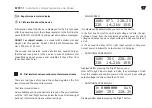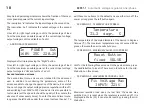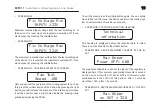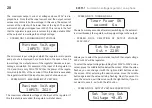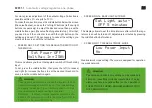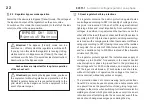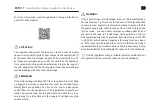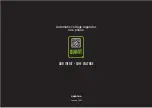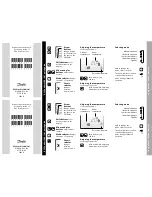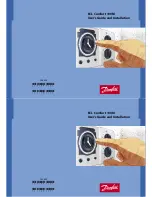
16
7. One-phase regulator operation
The regulatorprovides:
• 220V/230V±0.5% output voltage regulation for each phase with in-
put voltage change from 90V to 350V, with a frequency 45-50Hz;
• power to one-phase consumers with protection (by a shutdown)
against wrong alternation of phases, voltage imbalance, loss of
one-two phases;
• power to single-phase consumers directly from the outputs of the
regulators, with (optional, to be purchased separately) or without
auto-phase selection. This ensures that single-phase consumers
operate even in the event of voltage imbalance, loss of one or two
phases, or violation of the sequence of phase alternation, as it is not
a danger for single-phase consumers.
• a safe disconnection. If only one phase has been disconnected, the
phase control module will disconnect the one-phase load entirety.
If there is an option to select the best phase (separate unit, to be
purchased separately), then single-phase loads will be transferred
to the working phase.
• disconnection of consumers in case of increase of input voltage
over 350V and the main circuit breaker is switched off;
• protection against short-circuits and continuous output overloads;
• a Transit (Bypass) mode, if there is an emergency;
• consumer overvoltage protection in "Transit" mode with a threshold
of 260±5V;
• thermal protection of the regulator within a temperature range of
75–85°С;
• operation over the entire load range from idling to nominal load;
• disconnection of power consumers at short-term power outage
(makes it impossible to damage the consumers switched-mode
power supplies);
• the regulator does not distort the output voltage shape, and in the
presence of distortions in the power supply it reduces the content
of higher harmonics (improves the shape of the voltage) to reduce
heating and humming of electric motors and transformers;
• in the presence of both smooth and sudden mains voltage spikes
(at the regulator input), as long as they are within the allowable
regulation range, the output voltage of the regulator remains un-
changed, without failures and surges, even short ones (advanced
regulation). This is made for the safety of the electronics so that
it is always supplied with the nominal voltage of 220V (or 230V, if
selected), and also to avoid the flashing of incandescent lamps or
other lighting equipment;
• regulator consumption at idle speed not exceeding 15W per phase;
• the regulator contains a reactive power compensator. It reduces re-
active consumption by a maximum of 700kVA/month, reducing the
charge for exceeding reactive consumption;
• operation of the regulator with generators: connect the generator
only after the regulator is connected. Connecting a generator as a
reserve power supply to the regulator is possible only if there is a
special generator integration unit.
• Operation of the regulator with welding machines:
a.
Transformer welding machines give dangerous switching voltage
pulses during operation (especially with a weak and long power line).
If such a welding machine is connected to a QUANT regulator, the load
of the regulator will be reliably protected from these surges and spikes.
It is not recommended to connect such a welding machine (as well as
in general to use outdated and of poor quality transformer machines
(compared to inverter welding machines)) to the output of the regula-
tor. The fact is that although the regulator itself keeps the voltage with-
in standard value, but the internal line after it will simultaneously feed
another load and the welding machine. In this case, being on one line,
the welding machine will have a direct negative effect on the other load,
despite the stable voltage on the regulator terminals.
b.
Inverter welding machines can be used without restrictions, both on
the input and output of the regulator.
QUANT-7
Automatic voltage regulator, one-phase
















